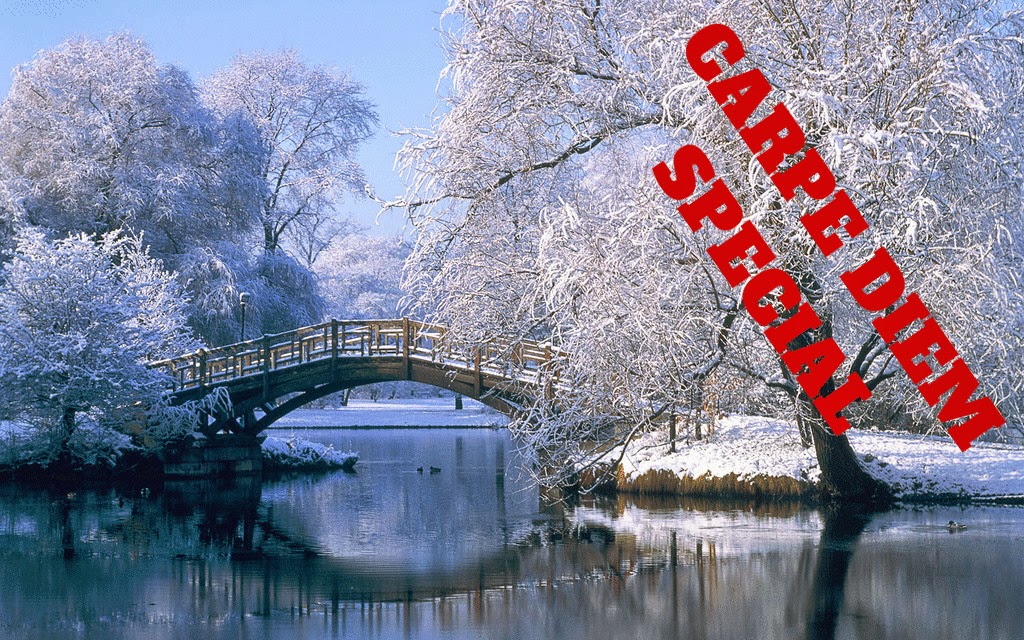!! This is a extra long post in which I will publish THREE prompts each with it's OWN LINKING WIDGET, because I take a weekend off as you could have read in our last Carpe Diem Extra !!
Carpe Diem #654, Sheperd's Purse (Nazuna)
Dear Haijin, visitors and travelers,
It's a bit strange to prepare this post, because I haven't done this earlier, taking a weekend off, but I am in need of a little bit rest ... so I have chosen to take a weekend off. Of course I will not leave you without the prompts from our prompt-list for these days, so in this post I will publish three prompts (each with it's own linking widget). And the first prompt is
Sheperd's Purse (Nazuna) it's one of the seven sacred herbs which are use the make a porridge around New Year.
Sheperd's Purse is a little herb which flowers whit little white flowers and it's leaves look like a little purse that's why it's called Sheperd's Purse. It's a fragile little herb and mostly it's overlooked, but (as we will see) it came under the attention of Matsuo Basho once and he wrote a nice haiku about it. This haiku is a kind of tribute to the beauty of Sheperd's Purse and it shows us how we have to look at nature (as haiku-poets). Even the little creatures/creations are worth writing a haiku about ... as we all know from our "Little Creatures" feature.
furu hata ya nazuna hana saku kakine kana
if you look closely
a Sheperd's Purse flowering
underneath the hedge
© Matsuo Basho (1686)
Really a beautiful haiku if I may say so, because it's really a tribute to the beauty of Sheperd's Purse. To write a haiku about it ... will not be easy.
"look granddad"
my granddaughter shows me Sheperd's Purse
"a money-purse".
© Chèvrefeuille
A nice one ... This part of this episode is
open for your submissions tonight at 7.00 PM (CET) and will remain open until January 26th at noon (CET). Have fun! Come on let us go further to our next part of this post,
First Calligraphy (Kakizome).
++++++++++++++++++++++++++++++++++++
++++++++++++++++++++++++++++++++++++
++++++++++++++++++++++++++++++++++++
Carpe Diem #655, First Calligraphy (Kakizome)
Dear Haijin, visitors and travelers,
I remember that I have mentioned this tradition of writing the first calligraphy earlier here at CDHK, but I can't really say when that was, but it doesn't matter (at least not to me) to do a prompt several times. As I told you in one of the earlier posts of this month the kigo for New Year (the fifth season) are for the main part all things which are done for the very first time.
The
First Calligraphy (Kakizome) is also such a tradition. I have found a few nice haiku by Issa on this first calligraphy which most times was written in the mud with a cane, and of course later on paper. Every haiku written as the first haiku of the New Year is special, but the ones I love to share here by Issa are really beautiful.
kakichin no
mikan mii mii kissho kana
looking,
looking
at the mandarin orange...
year's first calligraphy
tsui-tsui
to bô wo hiite mo kissho kana
swish,
swish
writing with my cane...
year's first calligraphy
ko-dakara ga bô wo hiite mo kissho kana
the
treasured child
writes with a cane...
year's first calligraphy
© Kobayashi Issa
 |
| calligraphed haiku |
In ancient Japanese times it was a great honor to write the first calligraphy so that third haiku is very special, because of the fact that this first calligraphy is done by a child, a treasured child. Maybe one of his own children, who sadly all lost their life at a young age.
I haven't really written a haiku with this kigo in it, but I love to share my "first calligraphy's" of 2013, 2014 and 2015 here with you all:
first day
of year
bad spirits and ghost defeated
royal fireworks
© Chèvrefeuille (January 1st, 2013)
lives
collide
Inner Fire burns
in the Aleph
© Chèvrefeuille (January 1st, 2014)
looking
back
2014 has passed away
nice thoughts remain
© Chèvrefeuille (January 1st, 2015)
A nice tradition I think, maybe I have to create an anthology of the first calligraphy's (first haiku) of our haiku family here at Carpe Diem Haiku Kai.
This part of this episode is open for your submissions Saturday January 24 at 7.00 PM (CET) and will remain open until January 27th at noon). Have fun! Now ... let us go on to the last (third) part of this episode, Isle of the Blessed (Hoorai).
++++++++++++++++++++++++++++++
++++++++++++++++++++++++++++++
++++++++++++++++++++++++++++++
Carpe Diem #656, Isle of the Blessed (Hoorai)
Dear Haijin, visitors and travelers,
Here it is our third part of this weekend-post, because I take a weekend off. It's not easy to write a post about this New Year kigo, because it's so specific for Japan, but well I have chosen to use it so I have to write it.
This also is such a kigo which looks strange as a kigo for New Year. What has Isle of the Blessed (Hoorai) to do with New Year? I will try to explain that.
Isle of the Blessed is the Japanese equivalent of the Western Elysian Fields or Heavens. In myth and legend, heavenly abodes are abundant. There is the Isle of Avalon where King Arthur still sleeps; the Isle of the Blessed ruled over by the giant Cronos; or the Elysium Fields, a place of incomparable beauty where virtuous Romans went after death. For the ancient Celts, there was the Otherworld, a place hidden from human eyes by a magical mist and visible on only one day of the year, the Feast of Samhain (November l), when the gates to both worlds were open and the souls of the dead were said to roam the earth.
Then, of course, there is the Eden story, the Paradise lost by man with the fall from grace of the first two humans, Adam and Eve. This is a concept shared by the world’s three great monotheistic religions — Judaism, Christianity and Islam — though it, too, is subject to much variation.
Interestingly, the most ancient of human civilisations, the Sumerian, Assyrian and Babylonian, did not believe in the existence of either an afterlife or a heaven. In these technically advanced societies, humans were believed doomed to remain forever in the “house of dust” or darkness, which “none who enters ever leaves”. In this house, the inhabitants find that “soil is their sustenance” and “clay their food” where, clad in bird feathers, they see no light but “dwell in darkness”.
Why is this "Isle of the Blessed" a New Year kigo? I think this had to do with remembering the ones who passed away in the last year, a kind of Halloween, but than on January 1st. Are we not all doing that as New Year's Eve is there? Looking back to what had happened in the last year? And look forward into the future. What a feeling to know that there will be an afterlife ...
I found a nice haiku on "Isle of the Blessed" composed by Narayanan Raghunathan (co-founder of Wonder Haiku Worlds):
I enter the Isle of
the Blessed - a distant
flute plays Bhairavi
© Narayanan Raghunathan
I wasn't inspired enough to write a haiku myself about this "Isle of the Blessed", but I sought through my archive and found another nice haiku about a kind of "Blessed Isle", Holy Isle. Holy Isle is a Buddhist Isle at the Northern waters of the United Kingdom.
painted on
rocks
the devote Buddhist monk
Holy Isle
Holy Isle
the Kagyan Tradition
painted on rocks
© Chèvrefeuille
Well ... I hope you did like this "Triple-episode" and remember every part of this post has it's own Linking Widget. This last part is open for your submissions Sunday January 25th at 7.00 PM (CET) and will remain open until January 28th at noon (CET). Well ... have fun! I will publish our new episode, our last haiku by Sogi, our featured haiku-poet, later on.





.jpg)




















